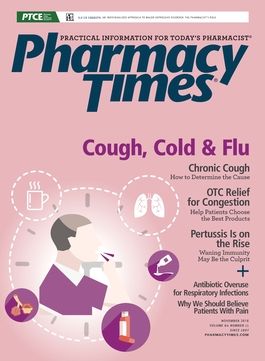Publication
Article
Pharmacy Times
Iron Products Need Improved Labeling
Author(s):
A practitioner reviewing the home medication list of an elderly patient learned that the patient’s daughter had been giving him 5 tablets of ferrous sulfate daily to equal the 325-mg dose recommended by her father’s physician.
A practitioner reviewing the home medication list of an elderly patient learned that the patient’s daughter had been giving him 5 tablets of ferrous sulfate daily to equal the 325-mg dose recommended by her father’s physician.
The ferrous sulfate she had purchased at a pharmacy was labeled with only the amount of elemental iron in each tablet, 65 mg. The label provided no indication that each tablet was equivalent to ferrous sulfate 325 mg. The patient’s daughter thought that she was supposed to give her father five 65-mg tablets for each 325-mg dose. The patient experienced severe constipation and stopped taking the iron after 2 days, but was soon hospitalized for other reasons, when the error was discovered.
We have also heard from practitioners who have misinterpreted iron supplement labels. For example, after receiving a product labeled iron (as ferrous sulfate) 65 mg, a nurse in a skilled-nursing facility mistakenly calculated that 5 tablets were needed for a single dose of ferrous sulfate 325 mg. Fortunately, she realized that 5 tablets per dose seemed unusual, and a call to the facility’s pharmacist helped prevent a serious medication error.
This is not a new problem. Long-standing lack of standardization for iron product labeling has led to frequent dispensing and administration errors. A total of 67 reports concerning iron were submitted to the Institute for Safe Medication Practices’ National Medication Errors Reporting Program between 1998 and 2017. Forty percent of these reports were the result of confusing product labeling on both the outer package of multidose containers and on individual-unit dose packages (Figure).

The primary display panel (top) lists the strength of ferrous sulfate as a salt, while the same product’s supplement facts panel (bottom) lists the strength as elemental iron.
Safe Practice Recommendations
To minimize the likelihood of errors with iron supplements, consider the following:
- All practitioners should stress the importance of keeping these products out of reach of children. If a caregiver reports an accidental ingestion, recommend calling the Poison Control number (800-222-1222) immediately. Encourage caregivers and patients to store this number in all their phones, including cell phones. It may take only a few tablets to cause serious toxicity in children.
- Consider storing iron supplements behind the pharmacy counter, and require a pharmacist to provide counseling regarding dosing instructions. If this is not possible, place products near the pharmacy checkout in plain view of the pharmacist, to capture any important counseling opportunities. At a minimum, use “shelf talkers” near these products to instruct patients to ask for a pharmacist’s help when selecting iron supplements.
- Despite iron supplements’ OTC status, prescribers should provide patients with a prescription to facilitate patient counseling by a pharmacist. Prescribers should also encourage patients to seek assistance from a pharmacist when selecting iron supplements, especially liquid formulations.
- Do not refer to the supplement as “iron” but instead as “elemental iron” or the appropriate “ferrous salt,” especially when communicating dose information.
- Ideally, all doses should be expressed in terms of milligrams of elemental iron. However, because prescribers often express doses in terms of the ferrous salt form, while some package labeling indicates strength in terms of elemental iron, both should appear in all forms of communication, such as drug references, manufacturer labels, medication administration records, patient charts, pharmacy labels, and prescriptions. For example, ferrous sulfate 325 mg (elemental iron 65 mg).
Michael J. Gaunt, PharmD, is a medication safety analyst and the editor of ISMP Medication Safety Alert! Community/Ambulatory Care Edition.







